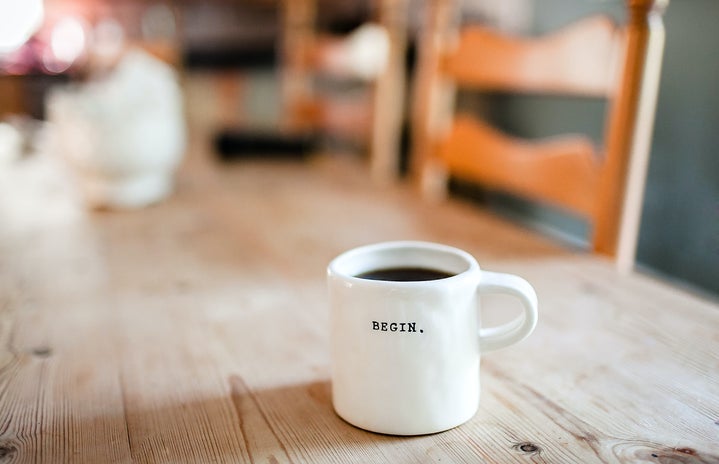Wellness is everything and more right now — as an industry that’s now worth $4.2 trillion (yes, you read that right), we are investing in our own personal wellbeing in 2019 and TBH, we love that for us. Three years ago, the wellness industry was just kicking into high gear, and Marah Lidey and Naomi Hirabayashi were ahead of the curve. Even more, they were working from the get-go to make the wellness industry a whole lot more accessible.
As entrepreneurs and co-founders of the wellness app Shine, Marah and Naomi are familiar with the landscape of wellness and inclusivity as they’ve experienced it firsthand. From exhaustion and isolation due to a concept referred to as representation burnout, to experiencing a feeling of “otherness”, the two worked from personal experience to create a digital community that could address and combat issues specific to women of color, members of the LGBTQ+ community, and those in a marginalized group. We chatted with Marah and Naomi about the representation burnout phenomenon prominent among marginalized groups, the importance of brands curating an inclusive community, and what it takes to build a successful wellness app that works for everyone.
How did you two meet?
Naomi and I met working together eight years ago — we both found ourselves with jobs that we really enjoyed. Naomi was a Chief Marketing Officer and I was the director of Global Products at a tech company and a non-profit. What was so great about getting to work together was that we both felt very elevated by our professional experiences — that’s what kind of what helped each other shine, for the lack of a better word. Being two women of color, we talk about ourselves as having nontraditional backgrounds, meaning that we didn’t go to business school. I was the first in my family to go to college and Naomi went to four colleges in five years.
What inspired you to create Shine? What did you want to accomplish with the creation of the app?
When we looked at the wider wellness market, we found that there wasn’t anything out there like what we provided each other. Wellness often sells to the privileged. You have to have a lot of money to get a life coach or you need to go on a 30-day yoga retreat. So, we started Shine. We have four million members in 189 countries that use our product every day to ultimately treat themselves better for daily self-care. It’s cool knowing to be able to reflect experiences that weren’t being reflected before. Our concept of representation has come up because we built a very diverse community. Our users are 90% female, 40% non-white and 20% LGBTQ+. Because of that representation in our community, we’re able to call out the issues that people might not be talking about on a broader scale.
What were the biggest challenges you have faced in creating your own wellness app?
What’s interesting about the self-care industry is how incredibly large it is. Apple just named self-care a trend of the year and just a few weeks ago, the World Health Organization announced that burnout was an occupational hazard. Three years ago, Marah and I knew this was the way our culture was going. We felt it in the conversations that we were having with our friends our experiences. One of the biggest challenges was proving that over the course of the last three years. Talking openly and thinking about resources around how to treat yourself better is off. We felt like we were the only ones struggling with what was happening in the news and how that has impacted our mental health for the day. We saw that there was a need for people to have a preventative resource — a community they can turn to.

Tell us more about the concept of representation burnout — how has this been something that has impacted you professionally and personally?
It’s been a broader conversation that has been going on for the past year, whether it’s a Buzzfeed article on burnout or other conversations that spurred from that. We all of the sudden are recognizing that our stress and anxiety levels are at an all-time high. What we heard from our community is that this burnout is very much reflected upon our own experience. There is a different type of burnout that happens if you’re a marginalized group. The definition of ‘representation burnout’ is the feeling of exhaustion that comes from being the only person of a particular identity in an environment — being the only woman in the room, being the only person of color in the room, or having a different socioeconomic background, for example.
We see mental health issues affect marginalized communities at much higher rates, which is largely because of the systems in place to support people who are the only or one of a very small few. Our first goal of combating this is to bring awareness to the issue. We started talking about the nuance of representation and the fact that representation doesn’t just mean race, but all the invisible experiences of a person, whether that be someone’s familial background or their access to capital. For example, we’ve always been asked at some point [in our careers] to “grab that flight and I’ll pay you back” — I know as a 21-year-old being asked to do that was hard and I didn’t feel super comfortable talking about. Naomi and I want to set a new standard for what it looks like to build inclusive and representative products and teams. We want to not only create more inclusive spaces, but we want to allow people to flourish in their own work environments as well.
How can brands and companies create a community that curbs these feelings of ‘otherness’ and representation burnout that women of color experience? How can others in that community help to support these women?
Every single piece of content that we put out from Shine, be it a meditation audio track or the daily shine message that people get every single day, goes through this privilege checklist to make sure something isn’t preachy, pricey, or presumptuous. It gives a great lens for other companies to look through, particularly around presumptuous. So many mistakes happen by just assuming. That checklist has been really helpful for us because representation is a cornerstone of our values. Even so, we need to make sure that we are always double-checking and always having systems in place to make sure that we aren’t missing that mark every single day. It would be a great thing if other companies used that lens.

What advice would you give to a 20-something woman of color who may feel the pressures of representation burnout or otherness in their professional or personal life?
I think the first one is acknowledging and naming it. By naming representation burnout, we gave them a place to feel less alone. Through any kind of therapy or emotional wellness, you’re able to find a space or a word that encapsulates what you’re feeling — you don’t feel weird or ashamed for feeling it. When you have the option or the choice to be in a room that you don’t feel comfortable in, recognize it and set that boundary for yourself. Set boundaries on what you are willing to talk about and what you are willing to push back on. Be able to give yourself a sense of security and safety by drawing your own line for those boundaries. Leaning on allies whether those are digital allies or in-person allies. Knowing that you’re not always going to have energy or time to be the one to speak up about a specific issue that you or community is facing. It’s having people that can talk to communities that are like them that can kind of translate and take that burden and energy off of you.


